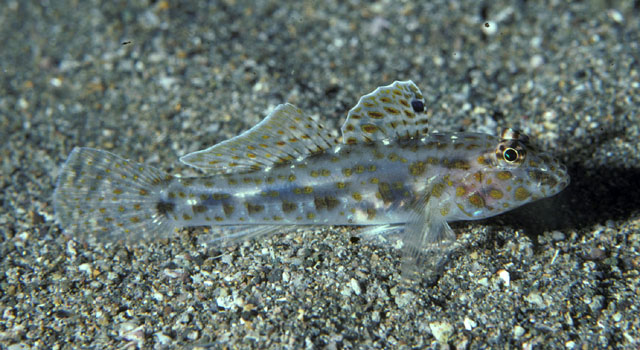| Gobiidae (Gobies), subfamily: Gobiinae |
| 7.5 cm SL (male/unsexed); 6.88 cm SL (female) |
|
demersal; marine; depth range 3 - 21 m |
| Indo-West Pacific: Red Sea, Sri Lanka, Indonesia, Philippines and the Coral Sea. |
|
Dorsal spines (total): 6-7; Dorsal soft rays (total): 9-9; Anal spines: 1-1; Anal soft rays: 8-8. Characterized by semi-translucent body with dusky orange-yellow spots on head, body, dorsal and caudal fins; first membrane of dorsal fin with vertically elongate black spot; black spot at midbase of caudal fin; fully united pelvic fins; presence of pelvic frenum; rounded caudal fin; longitudinal scale series 26-27; ctenoid scales except cycloid on breast, base of pectoral fin and anteroventrally on abdomen; absence of scales on operculum; median predorsal scales absent, but scales on side of nape extending to above rear edge of preopercle; opening of gill extending to within one-fifth opercle width from posterior edge of preopercle; depth of body 4.7-5.5 in SL (Ref. 90102). |
| Inhabits sand-rubble bottoms near reefs in 3-21 m (Ref. 90102). |
|
Least Concern (LC); Date assessed: 13 March 2015 Ref. (130435)
|
| harmless |
Source and more info: www.fishbase.org. For personal, classroom, and other internal use only. Not for publication.
